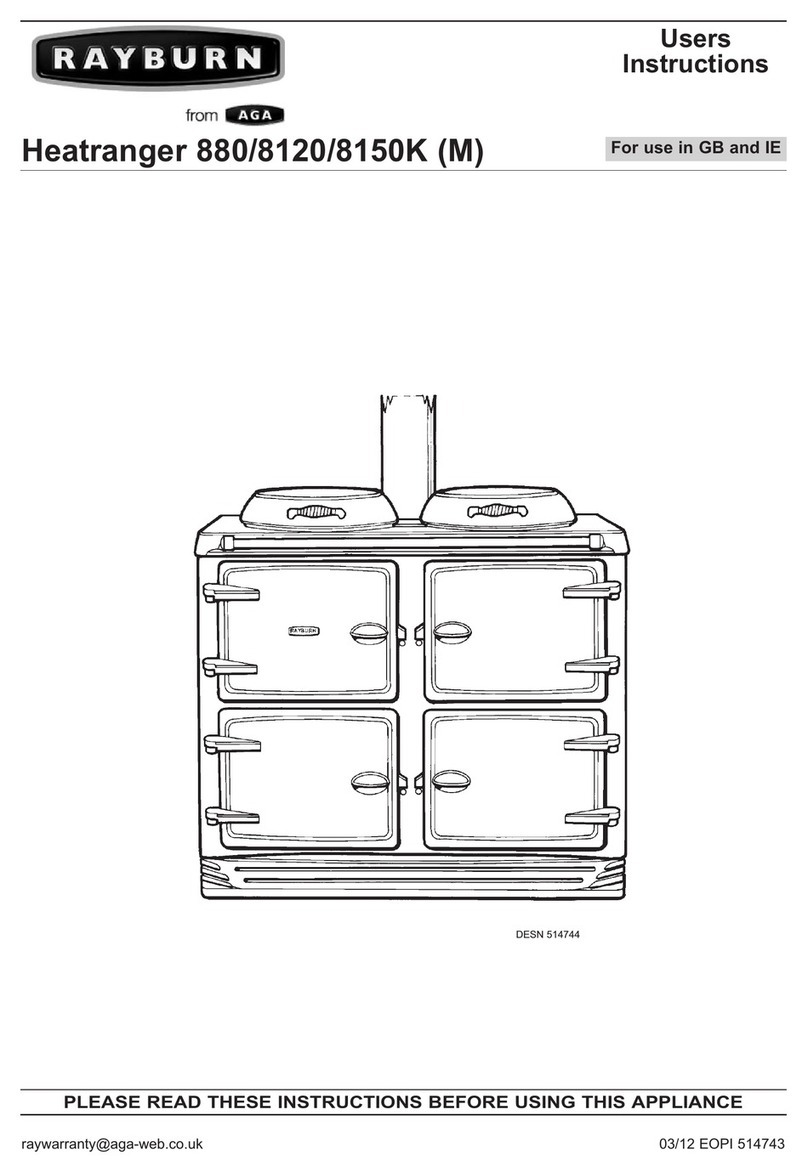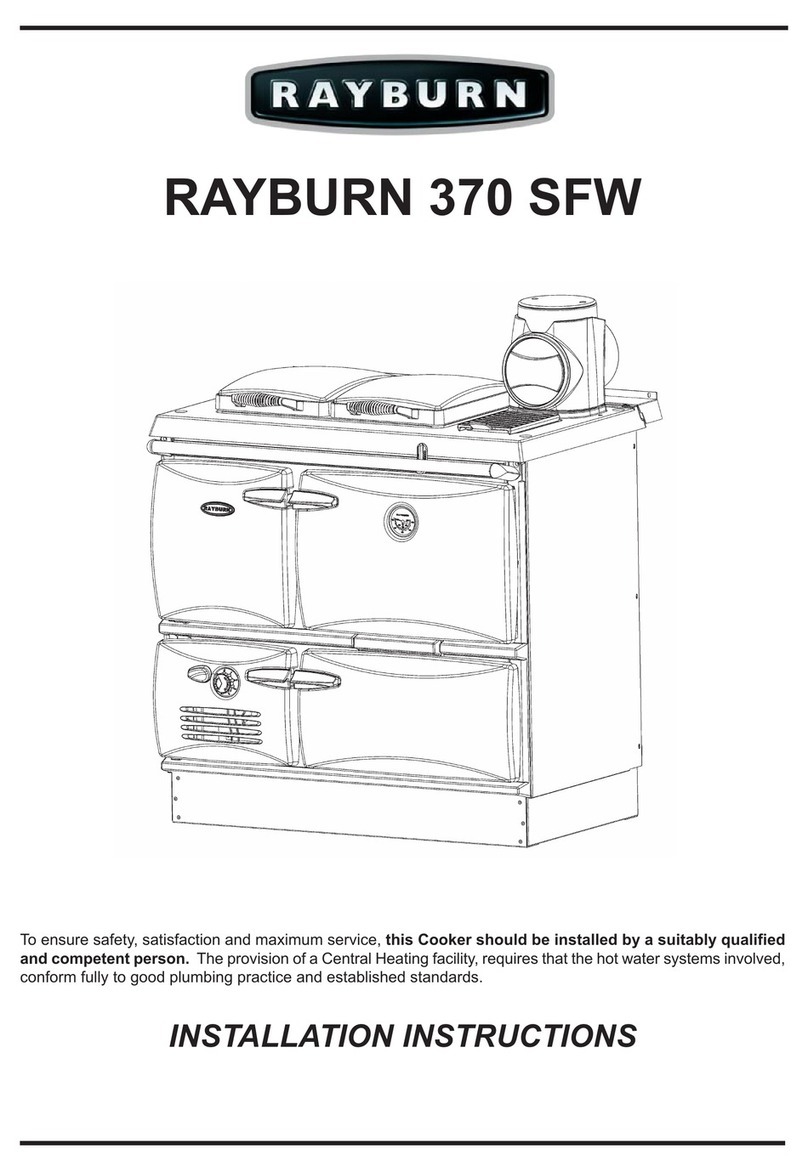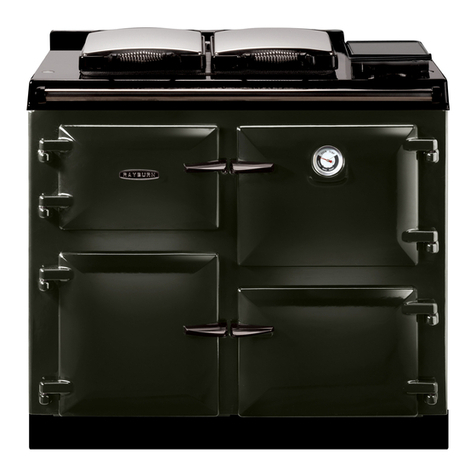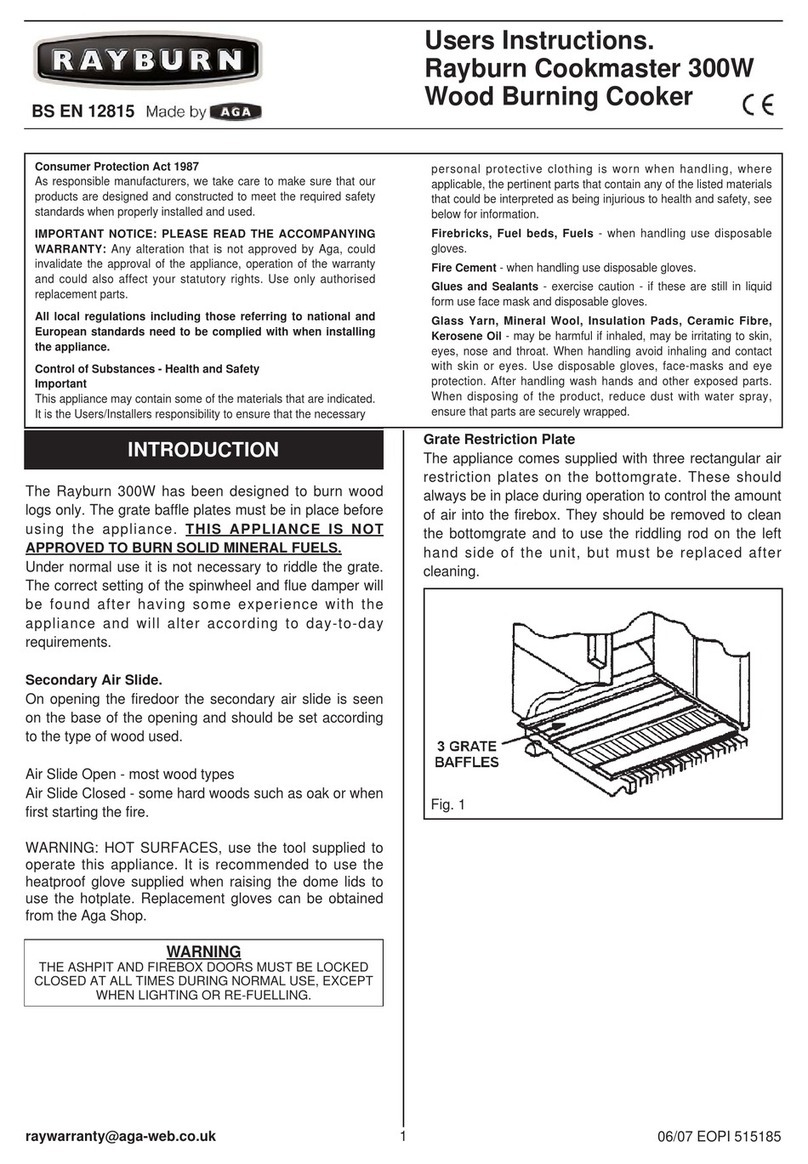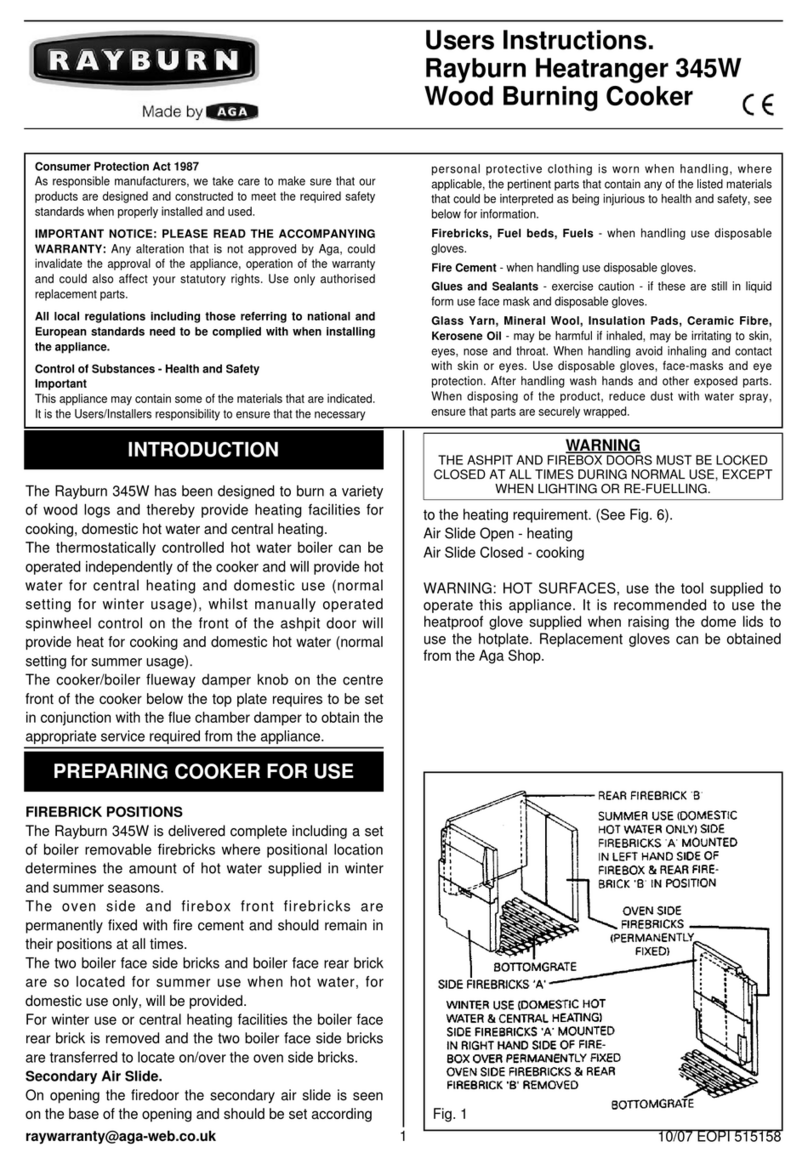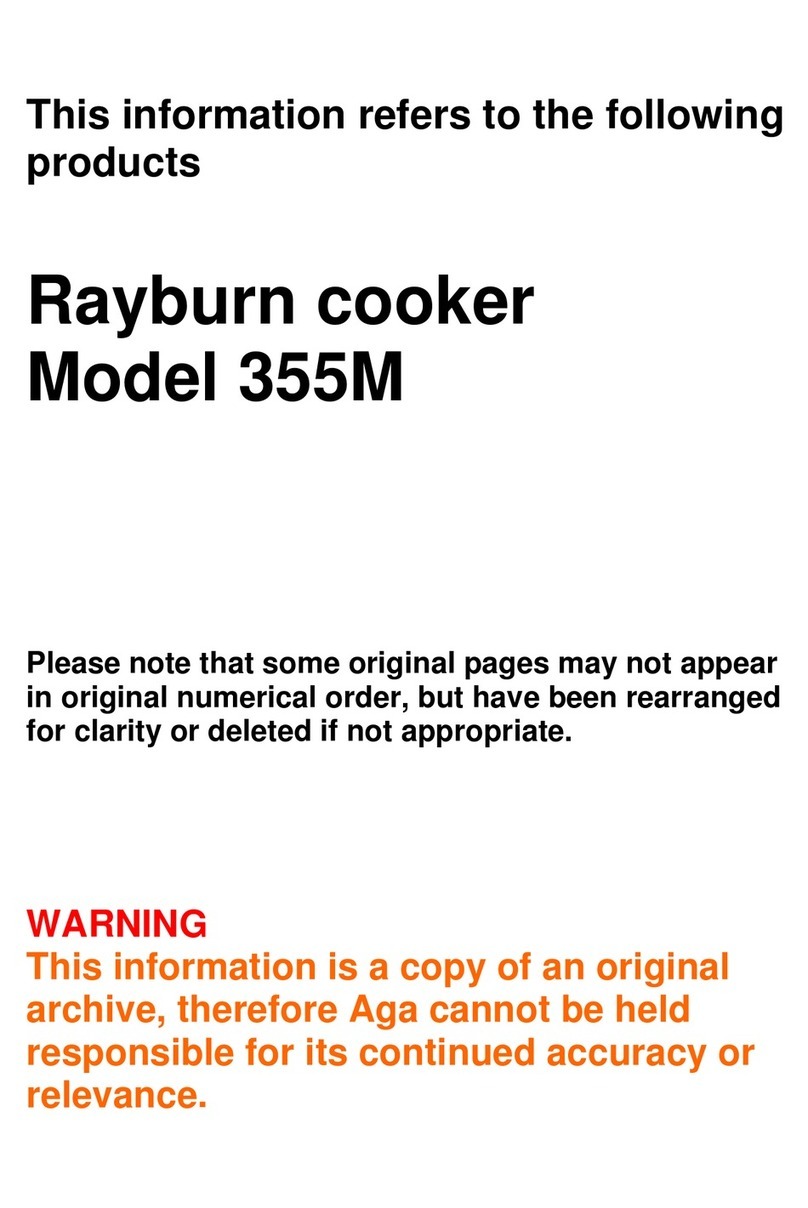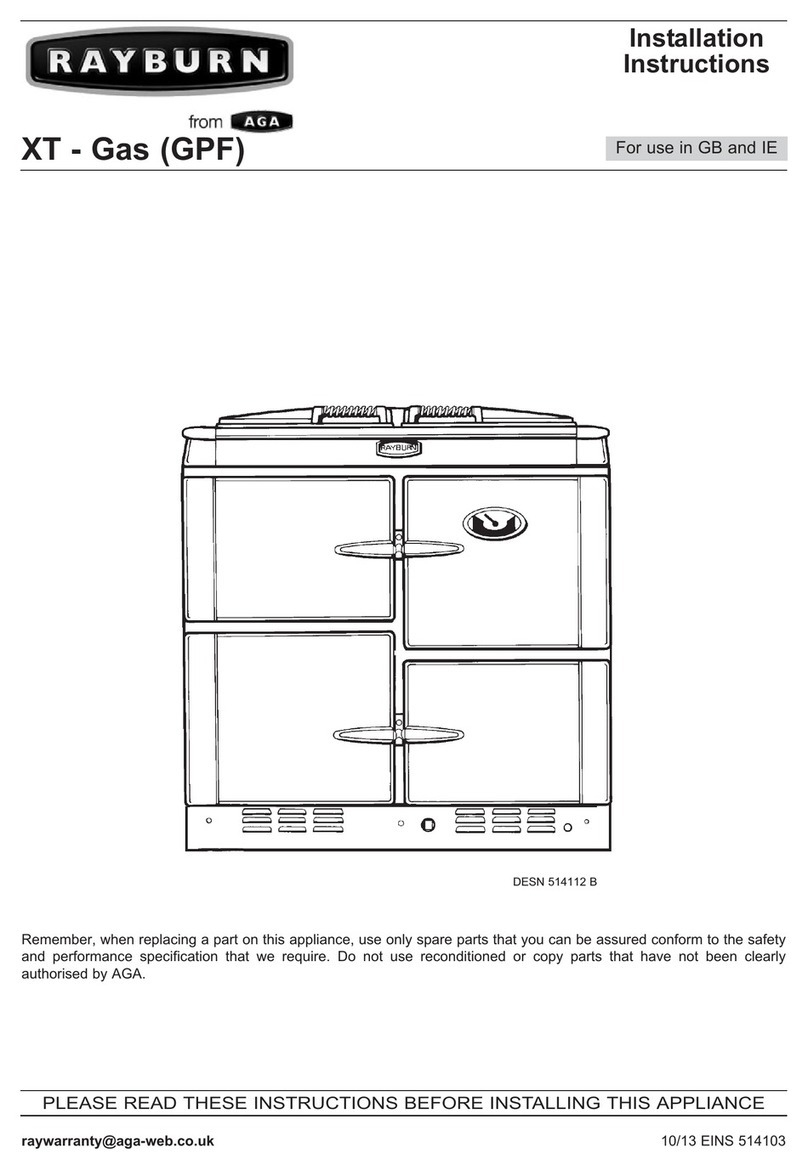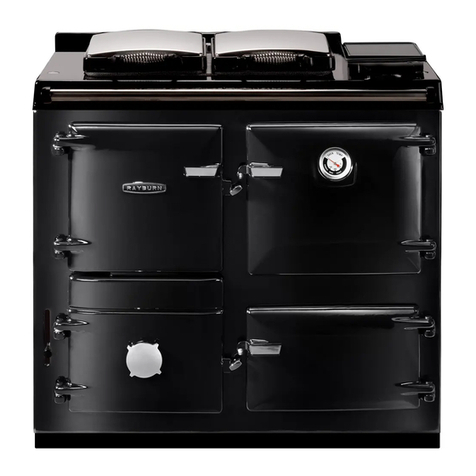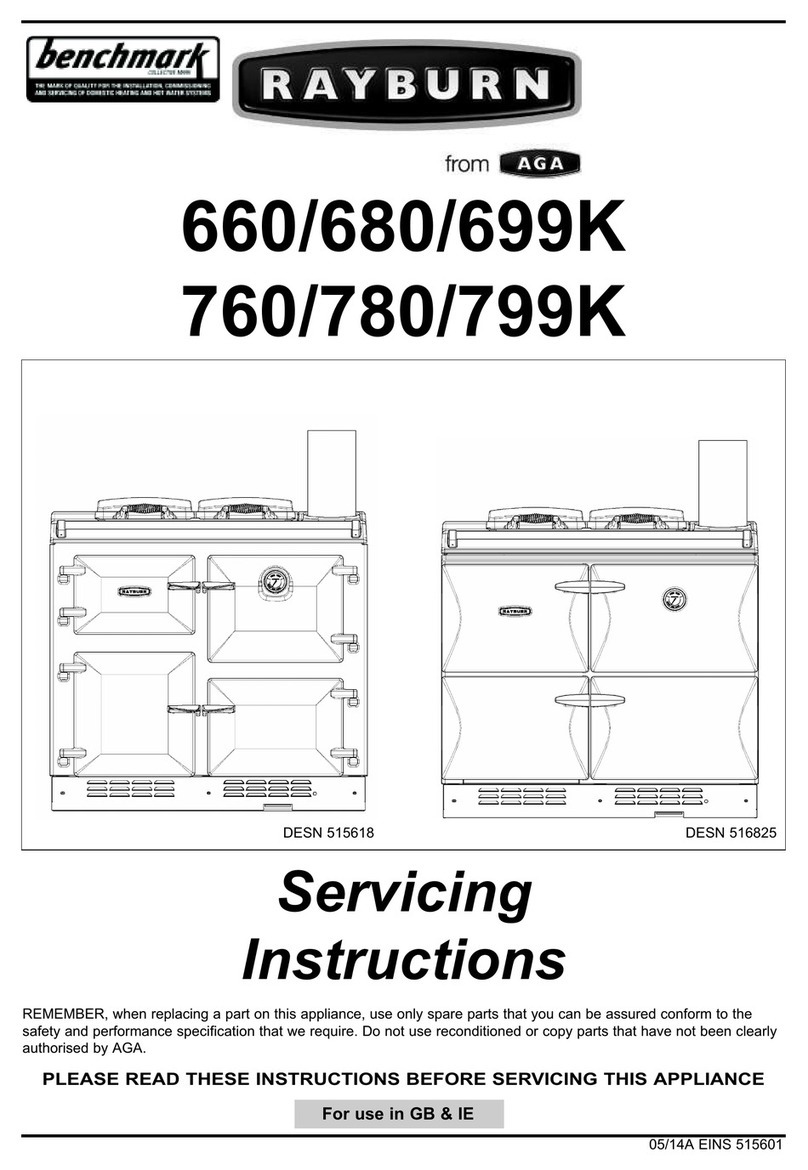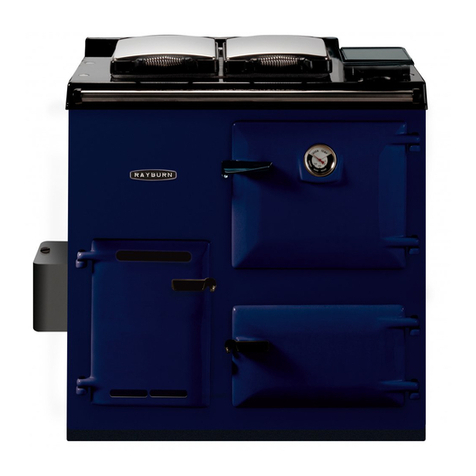immediately above the fire, the other end is for simmering.
The plug in the hotplate at the flue chamber end is for flue
cleaning and should not be removed for cooking or when
the cooker is fired.
NOTE: IN ORDER TO OBTAIN AN OPTIMUM HOT
PLATE PERFORMANCE FOR FAST BOILING OR HOT
PLATE COOKING, FUEL THE FIREBOX TO THE
BOTTOM EDGE OF THE FULLING APERTURE TO A
HORIZONTAL LEVEL.
WARNING: THE COOKER TOP PLATE SURFACE
AROUND THE HOTPLATE WILL BECOME HOT UNDER
USE AND CARE MUST BE OBSERVED. PLEASE
REFER TO THE INSTALLATION INSTRUCTIONS
REGARDING MINIMUM CLEARANCES TO
COMBUSTIBLE SURFACES AND MATERIALS.
Wood
The cooker is designed for continuous slumbering
overnight up to a maximum of 12 hours depending on the
type of dry wood being used.
Last thing at night, open the chimney damper, riddle the
fire, empty the ashpan and refuel as described under
“Fuelling”. Ensure that the ashpit door is securely
closed, spinwheel is closed and opened a 1/4 turn and
the damper is closed to its No.1 setting.
Turn the pivoted dilution lever (on the bottom front flue
chamber door) Fig. 9 from left to right hand side so that
the door opens at the bottom and minimises the burning
rate and chimney condensation.
NOTE: THE PRECISE AMOUNT OF OPENING
DEPENDS ON THE CHIMNEY DRAUGHT AND MAY
TAKE 2 OR 3 DAYS TO ASCERTAIN IN CONJUNCTION
WITH THE TYPE/CONDITION OF WOOD BEING
BURNT.
1. If the fuel in the firebox is exhausted prematurely, the
overnight chimney draught must be reduced by further
opening of the flue chamber door.
2. If the fuel does not burn but ‘dies out’ the draught
should be increased by partly closing the flue chamber
door. In the morning, close the flue chamber door, open
the spinwheel and damper and fuel the fire. Immediately
the new fuel has caught alight, riddle the fire and close the
damper.
NOTE: BUILD-UP OF CREOSOTE DEPOSITS IN THE
FLUE AND CHIMNEY CAN IN TIME, LEAD TO
CHIMNEY FIRES. THESE DEPOSITS CAN BE
PREVENTED BY THE REGULAR USE OF A
PROPRIETARY BRAND OF CHEMICAL CREOSOTE
REMOVER CHIMNEY CLEANER SUCH AS ”ATTACK”
WHICH REDUCES THE ADHESION STRENGTH OF
THE CREOSOTE DEPOSITS, CAUSING THEM TO
FALL.
IMPORTANT: CHEMICAL CLEANERS MUST NOT BE
CONSIDERED AS AN ALTERNATIVE TO CHIMNEY
SWEEPING, ONLY AS SUPPLEMENTARY.
DO NOT CARRY OUT THIS OPERATION WITH THE
FIRE ALIGHT.
Solid Fuel
The cooker is designed for continuous burning and the
best results will only be obtained if it is allowed to burn
overnight. It is no more expensive in fuel. Last thing at
night open the chimney damper, riddle the fire, empty the
ashpan and refuel. Do not overload. Ensure that the
ashpit door is securely closed. Close the spinwheel
and reopen it a quarter of a turn.
THE BEST POSITION FOR THE CHIMNEY DAMPER
CAN BE FOUND ONLY BY EXPERIMENT, BUT FOR A
START TRY CLOSING IT TO No. 1 SETTING.
In the morning, open the spinwheel and damper and
riddle the fire. When it is burning, close damper, if the
hotplate is required immediately, lightly refuel before use.
EXCEPTIONS: WHEN BURNING ANTHRACITE OR
PHURNACITE ALWAYS REFUEL BEFORE EMPTYING
ASHPAN AND RIDDLING.
Open the chimney damper to its full extent and the ashpit
door. Engage the operating tool into the riddling lever
which projects through the ashpan front and push/pull the
lever in a back and forth motion to de-ash.
ALWAYS DE-ASH BEFORE REFUELLING (SEE
‘EXCEPTIONS’ BELOW AT THE FOLLOWING
INTERVALS).
SUMMER USE:
Three times daily at least.
WINTER USE:
Three time daily at least and more often if required.
NOTE: SHOULD THE BOTTOMGRATE DE-ASHING
FAIL TO CLEAR AN ACCUMULATION OF STONES,
SHALE OR CLINKER, IT MAY BE REMOVED AS
DESCRIBED IN SECTION ‘REMOVAL OF CLINKER’.
Open the ashpit door to give access to the ashpan which
must be emptied regularly (See Fig. 8). In winter, this may
be more than three times daily depending on weather
severity. The class of fuel and cooker usage govern the
frequency of refuelling.
NOTE: DO NOT ALLOW ASH TO ACCUMULATE IN
THE ASHPAN UNTIL IT TOUCHES THE UNDERSIDE
OF THE BOTTOMGRATE BARS OR THEY WILL
QUICKLY BURN OUT.
Ensure the ashpan is fully home otherwise the ashpit
door may not close and lock completely.
Clinker Removal - ‘To Dump the Grate’.
1. Open the ashpit door and remove ashpan.
2. Insert wire tool into locating sockets of grate frame
(See Fig. 14) lifting hand holding end upwards until
grate frame is free of its supports. Taking the weight
of the grate frame, gently lower front of grate
assembly until it rests on ashpit bottom plate.
3. Remove clinker from sloping bottom grate either by
raking poker or tongs.
4. Lift tool upwards and replace front of grate in reverse
manner described in 2ensuring the grate frame is
securely supported and located.
5. Check that the reciprocating bars operate by
push/pulling the ridding lever with the tool.
6. Replace the ashpan and lock the ashpit door
securely.
OVERNIGHT BURNING
6
